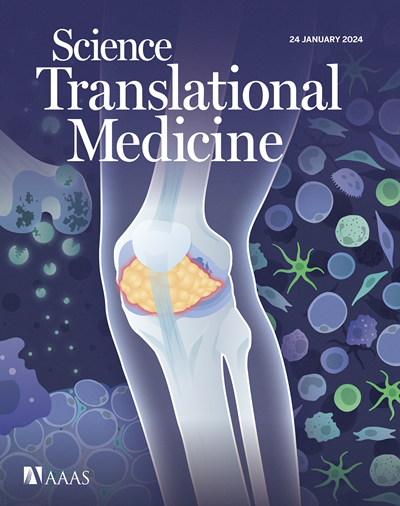Human iPSC–derived nephron progenitor cells treat acute kidney injury and chronic kidney disease in mouse models
IF 15.8
1区 医学
Q1 CELL BIOLOGY
引用次数: 0
Abstract
The number of patients requiring dialysis therapy continues to increase worldwide because of the lack of effective treatments for chronic kidney disease (CKD). Furthermore, no curative treatments for acute kidney injury (AKI) have been established. The therapeutic effects of human induced pluripotent stem cell–derived nephron progenitor cells (hiPSC-NPCs) on AKI have been reported in mice but not clinically confirmed. There are also no reports examining the therapeutic potential of hiPSC-NPCs on CKD. Although large numbers of uniform hiPSC-NPCs are required for cell therapies for AKI and CKD, effective expansion cultures remain to be developed. Here, we established a culture medium for cells that enabled more than 100-fold proliferation of hiPSC-NPCs from multiple hiPSC lines in two passages. We demonstrated that hiPSC-NPCs expanded by our medium named CFY or by their conditioned medium alone attenuated kidney injury and improved survival in cisplatin-induced AKI mice. We also observed that hiPSC-NPCs prevented kidney functional decline, interstitial fibrosis, and senescence in aristolochic acid–induced CKD mice. In addition, we found c-MET to be a specific cell surface marker for hiPSC-NPCs and confirmed that purified c-MET+ hiPSC-NPCs had therapeutic effects on AKI and CKD mice. Furthermore, we found that hiPSC-NPCs exerted their therapeutic effects in AKI and CKD mice by secreting vascular endothelial growth factor A. Expanded hiPSC-NPCs may be useful cell therapies for AKI and CKD and may open avenues for treating kidney diseases.
求助全文
约1分钟内获得全文
求助全文
来源期刊

Science Translational Medicine
CELL BIOLOGY-MEDICINE, RESEARCH & EXPERIMENTAL
CiteScore
26.70
自引率
1.20%
发文量
309
审稿时长
1.7 months
期刊介绍:
Science Translational Medicine is an online journal that focuses on publishing research at the intersection of science, engineering, and medicine. The goal of the journal is to promote human health by providing a platform for researchers from various disciplines to communicate their latest advancements in biomedical, translational, and clinical research.
The journal aims to address the slow translation of scientific knowledge into effective treatments and health measures. It publishes articles that fill the knowledge gaps between preclinical research and medical applications, with a focus on accelerating the translation of knowledge into new ways of preventing, diagnosing, and treating human diseases.
The scope of Science Translational Medicine includes various areas such as cardiovascular disease, immunology/vaccines, metabolism/diabetes/obesity, neuroscience/neurology/psychiatry, cancer, infectious diseases, policy, behavior, bioengineering, chemical genomics/drug discovery, imaging, applied physical sciences, medical nanotechnology, drug delivery, biomarkers, gene therapy/regenerative medicine, toxicology and pharmacokinetics, data mining, cell culture, animal and human studies, medical informatics, and other interdisciplinary approaches to medicine.
The target audience of the journal includes researchers and management in academia, government, and the biotechnology and pharmaceutical industries. It is also relevant to physician scientists, regulators, policy makers, investors, business developers, and funding agencies.
 求助内容:
求助内容: 应助结果提醒方式:
应助结果提醒方式:


